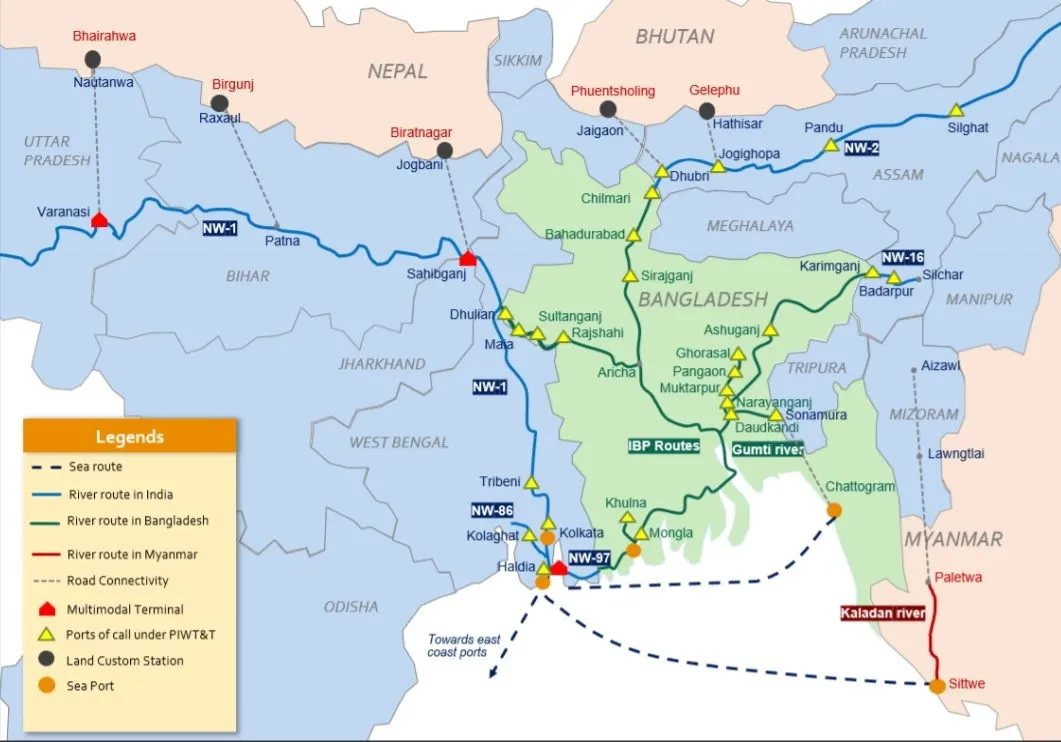
By Ashis Biswas
Improved bilateral road and rail connectivity has helped the growth of Indo-Bangladesh import/export trade, during the past decade. In particular Tripura Chief Minister Mr Manik Saha, while welcoming the robust trend of bilateral trade, is hopeful of increasing exports from the state.
However, India Government sources are concerned over the growing trade gap between the two countries in terms of business volumes and earnings in Indo-Bangladesh trade conducted in the Northeast region. Over the years, Bangladesh has increased its exports to the NE region and beyond substantially, but exports from the region have not kept pace.
The outcome of increasing bilateral trade/business for Bangladesh being strongly positive, Bangladesh authorities are naturally pleased. They have called for greater trade with NE states, a demand that has drawn a positive response from Meghalaya and the Barak Valley area of Assam. As for India, while authorities have kept track of present trends, there has been no negative over-reaction. In the context of overall Indo-Bangla trade, the country exports far more to Bangladesh than it imports.
India is the second biggest trading partner for Bangladesh, which accounts for a considerable 12% of aggregate Indian exports. The size of bilateral trade in 2021-22 was $18.2 billion. Bangladesh has been consistently seeking specific tariff and other concessions to narrow down the existing gap and has won some relief from India in recent years.
Economists feel that once the Agartala-Akhaura rail link becomes commercially operational and to-and-fro bulk cargo movement begins via the new Padma bridge, the volume of Indian exports made through the NE region would increase majorly. The long awaited route connecting Kolkata with Agartala running through Bangladesh territory, would reduce the travel time from around 32 hours to 8/10 hours on average. Export of perishable goods especially to Bangladesh from the mainland India can be speeded up using the new route.
At present, the NE component of total Indian exports to Bangladesh remains small. Nonetheless, Chief Minister Mr Saha is happy that bilateral trade/business volume in the NE region has increased from Rs 390.68 crore in 2017-18 to Rs 758.9 crore in 2022-23. Belying its comparatively small size territorially, Tripura exported items worth Rs 121 crore to the neighbouring country — no mean feat.
Considering that Bangladesh buys mostly agricultural and food items from Tripura, including tea, fruits, processed fruit items, rubber goods , bamboo products and related handicrafts , species and medicinal plants from Tripura, the trade gap is understandable. Tripura mostly imports machinery, machine parts, raw jute and related items, frozen fish and other value-added goods from Bangladesh.
Trade/business circles and economists in both countries are hopeful that if the present rate of growth in the export/import trade in the region is maintained, the area could emerge as a significant business hub in the medium term. A slow and steady development of primary level infrastructure, involving the growth of transport, banking, shopping areas and medical facilities etc, has already become noticeable on both sides of the Tripura/Bangladesh border. This should lead to further economic expansion, better road building, job creation and a gradual upskilling of local labour.
Already, the increased export earnings of Tripura have made a difference to Tripura’s economic prospects. The state‘s GSDP (Gross State Domestic Product) is scheduled to grow by 8.9% by 2023-24, by present indications. It is expected to touch 8.8% by end 2022-23. Both figures are higher than the projected GSDP growth figure for the country as a whole, estimated at around 7% at present.
This has been happening at a time when Tripura has been desperately seeking central financial assistance to maintain its growth momentum in crucial sectors of its economy. The state has long been a victim of inaccessibility in terms of transportation facilities and linkages, a difficult hilly terrain in many places, with its share of malaria and other diseases in the wooded interior and its proneness to flash floods.
Quite apart from benefiting from the improved connectivity, Tripura seeks to set up in a big way the export of rubber and rubber-based items to Bangladesh and beyond in the coming years. It is the second largest rubber growing state in India after Kerala. As for air connectivity, the Agartala airport will soon be linked with the Chittagong airport in Bangladesh, giving it an international status. This has been a long standing demand from the state Government as Tripura expects tourism to expand considerably with increasing tourist traffic from Bangladesh, Myanmar and other areas.
As with most states in the NE region, recent positive trends by way of economic development has been the major driver of peace and (by and large) political stability in the region, experts feel. Development, they insist, is the best answer to the threat of insurgency and political unrest — peace cannot be ensured by stringent legislation alone. (IPA Service)
The post Tripura Economy Gets Big Boost Following Trade Expansion With Bangladesh first appeared on IPA Newspack.


